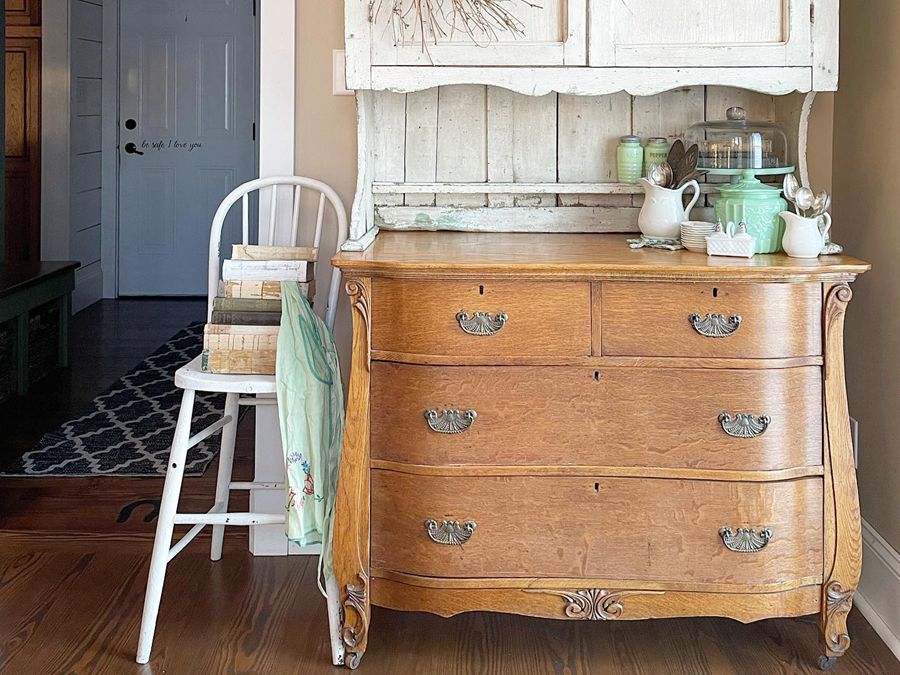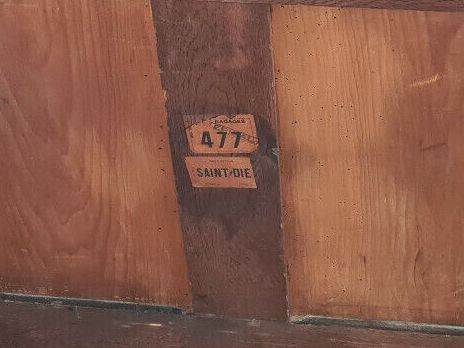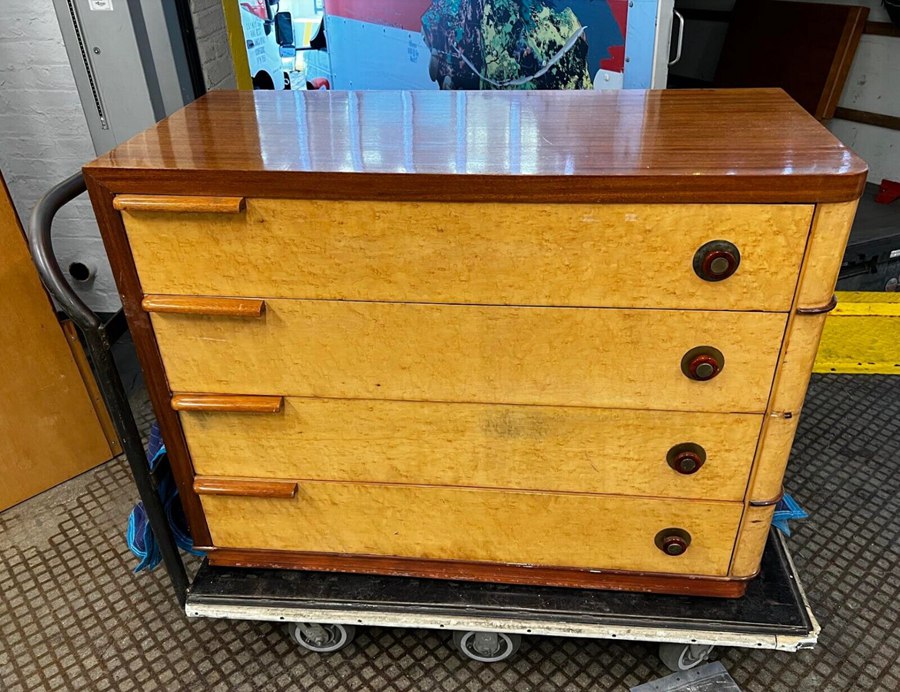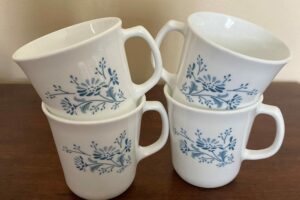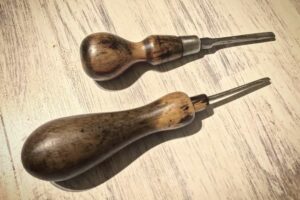Antique dressers are fascinating pieces of furniture that can add a touch of history and charm to your home. Identifying antique dresser styles can be a rewarding and educational experience, as it will help you understand the history and craftsmanship of these storied items. In this article, you will learn what to look for when identifying the different styles of antique dressers, based on their carvings, legs, materials, and panels.
As you delve into the world of antique dressers, you will come across various styles, such as Hepplewhite, Sheraton, Queen Anne, Victorian, and Edwardian. Each style carries distinct features that make them unique, and recognizing these elements can determine the origin, age, and overall aesthetics. For example, Hepplewhite and Sheraton dressers often incorporate more gold and metal inlays, with nature-themed carvings and intricate handles and locks. Meanwhile, Queen Anne, Victorian, and Edwardian dresser styles offer a vintage, colonial feel.
Keep an eye out for telltale signs such as round wooden knobs, tapered legs, subtle curves, or specific wood types, such as pine, maple, cherry, or other American woods often used in shaker-style furniture. With careful observation and a keen eye for detail, you will become more confident in recognizing the different antique dresser styles and their historical significance.
Table of Contents
Basic Identification Techniques
Labels and Stamps
One of the first things you should look for when trying to identify an antique dresser is a maker’s mark or stamp. These can often be hidden on the back of the dresser or inside drawers. Labels and stamps can help you determine the age and origin of your dresser with greater accuracy.
Construction and Joinery
Pay close attention to the construction and joinery of your dresser, specifically at the dovetail joints. Handmade dovetail joints often have a more irregular shape with varying widths, while machine-produced dovetails are more regular and uniform. This can give you an idea of the age of the dresser; if the dovetails are irregular, the dresser is likely to be older and handcrafted.
Materials and Hardware
Antique dressers can be made from various materials, such as pine, maple, cherry, or other American woods. The type of wood used can give you clues about the style and era of the dresser. Additionally, inspect the hardware on the dresser, such as handles and locks. You may find that dressers from specific periods have particular types of hardware, like gold or metal inlays on Hepplewhite and Sheraton dressers or round wooden knobs on Shaker furniture.
Knowing the basic techniques for identifying antique dressers will help you on your journey to understanding the age, materials, and maker of your prized possession. Be sure to take your time and thoroughly examine your dresser, using these tips to confidently identify and appreciate its unique character and history.
Popular Antique Dresser Styles
Queen Anne
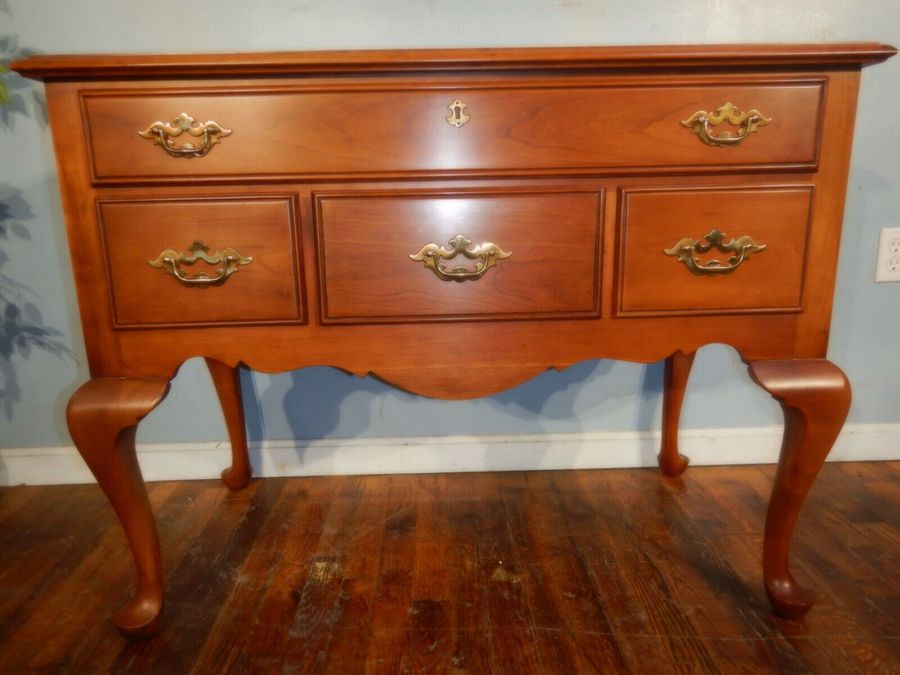
The Queen Anne style is known for its graceful, elegant lines and sophisticated details. You can identify a Queen Anne dresser by its curved legs, often referred to as cabriole legs, and its understated carvings. These dressers usually feature walnut, mahogany, or other rich woods in their construction. Queen Anne dressers exude a sense of refinement, making them a perfect choice for those who appreciate classic design elements in their furniture.
Victorian
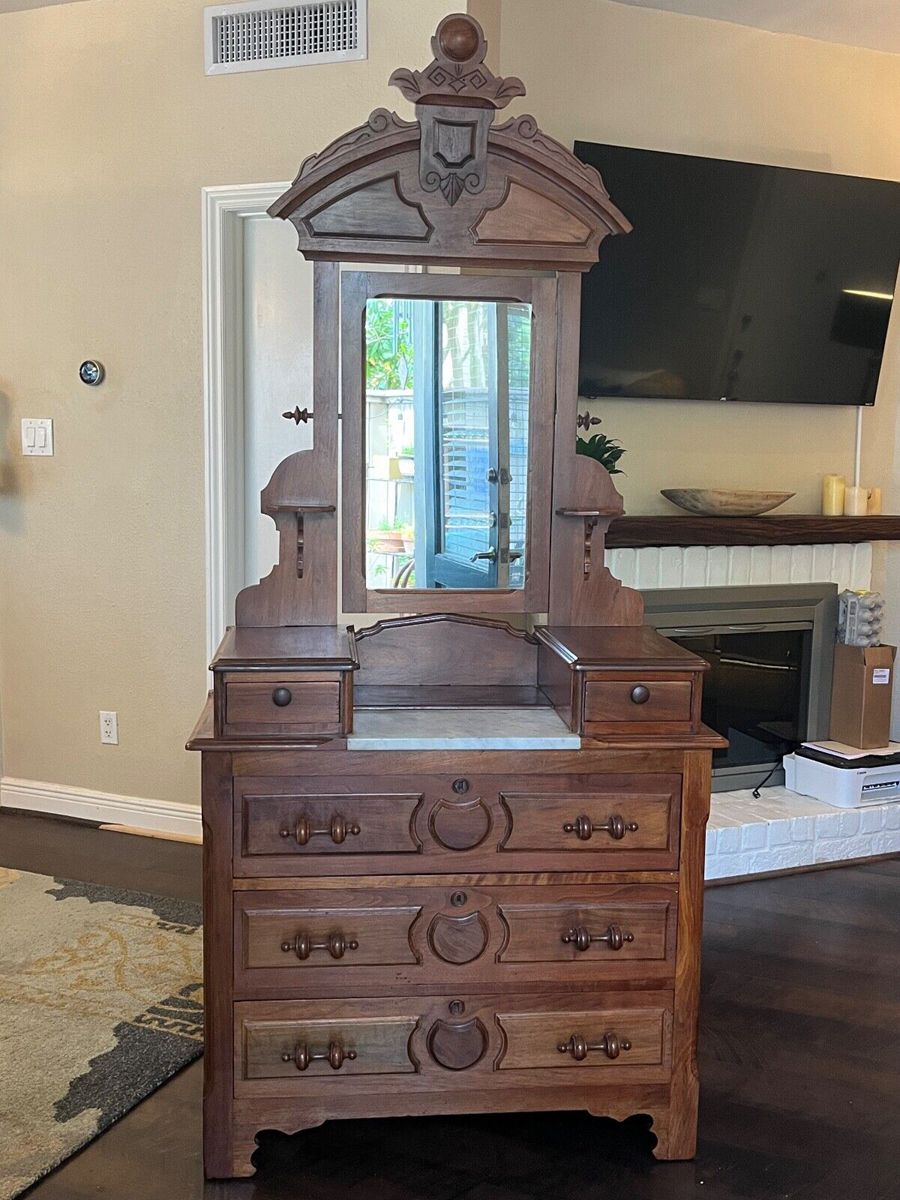
Victorian dressers tend to be more ornate, featuring intricate carvings and embellishments. These dressers are generally made from dark woods like mahogany or walnut and can often be identified by their marble tops or heavy wooden mirrors. The legs of a Victorian dresser may be carved or adorned with decorative inlays. The overall design of this style captures the opulence and grandeur of the Victorian era, giving your bedroom a touch of luxury.
Rococo
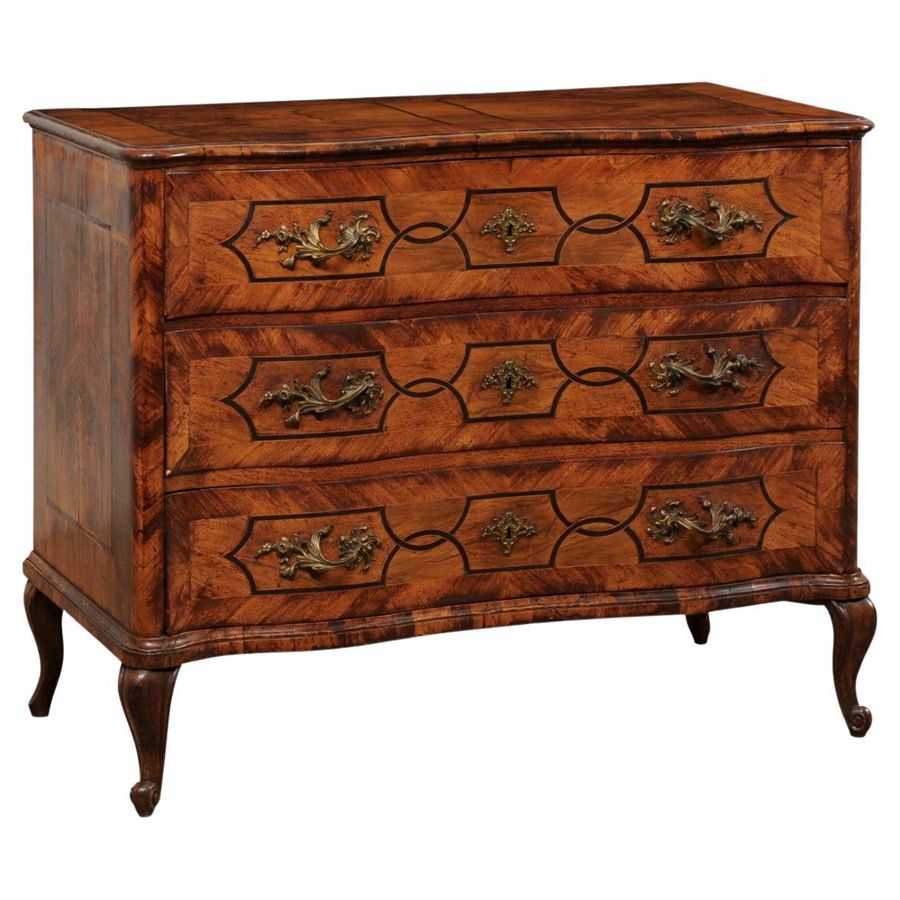
The Rococo style is characterized by its elaborate and ornate features. Rococo dressers typically include C- or S-shaped scrolls, carved decorations such as flowers, leaves, and scallop shells, and may even feature gilded embellishments. Inspired by the Royal courts of France, the Rococo dresser brings an air of sophistication and luxury to any bedroom.
Edwardian
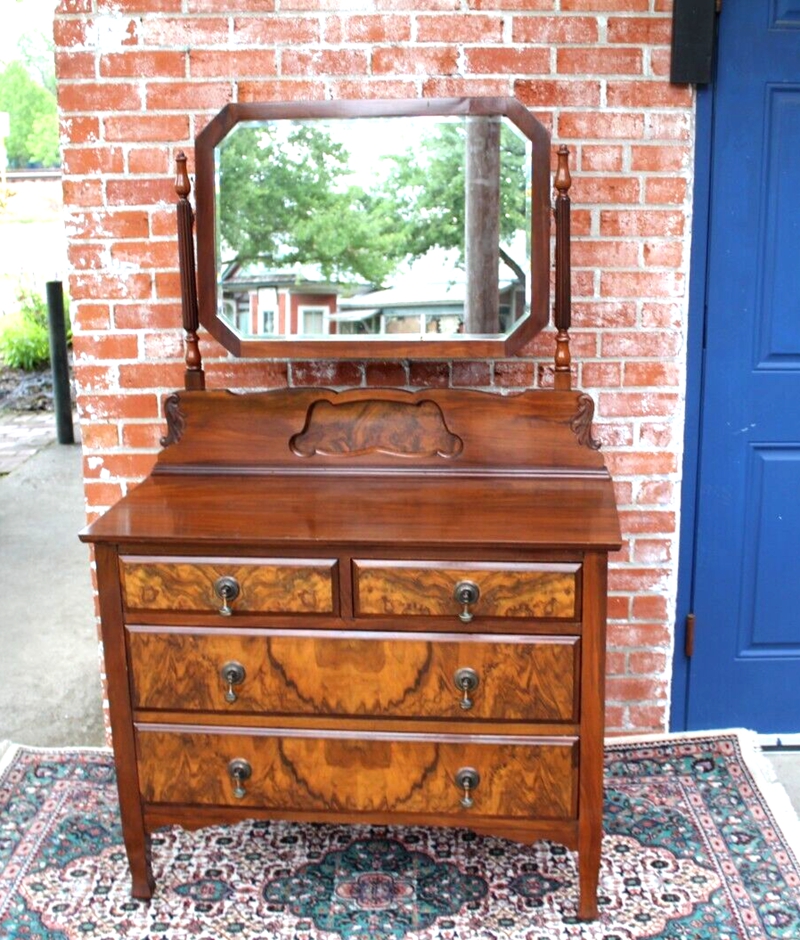
Edwardian dressers are known for their light and airy design, featuring delicate carvings and inlays. Made from lighter woods like pine or oak, these dressers typically have tapered legs and may include ornamental details like floral motifs or brass hardware. Edwardian furniture is the perfect choice if you’re looking for a style that reflects grace and elegance with a touch of whimsy.
Louis XV
Louis XV dressers showcase the opulence of the French royal court. The style features curved, slender legs, detailed carvings, and ornate hardware. Materials such as rosewood, walnut, and mahogany are commonly used in Louis XV furniture, complementing the overall aesthetic of extravagance.
Art Deco
Art Deco dressers feature geometric and streamlined designs. The style emerged during the Art Nouveau era and showcases sleek lines, bold colors, and unique patterns. Materials such as polished chrome, lacquer or even exotic veneers are used in the construction, along with circular or curved elements that distinguish it from other antique dresser styles.
Sheraton
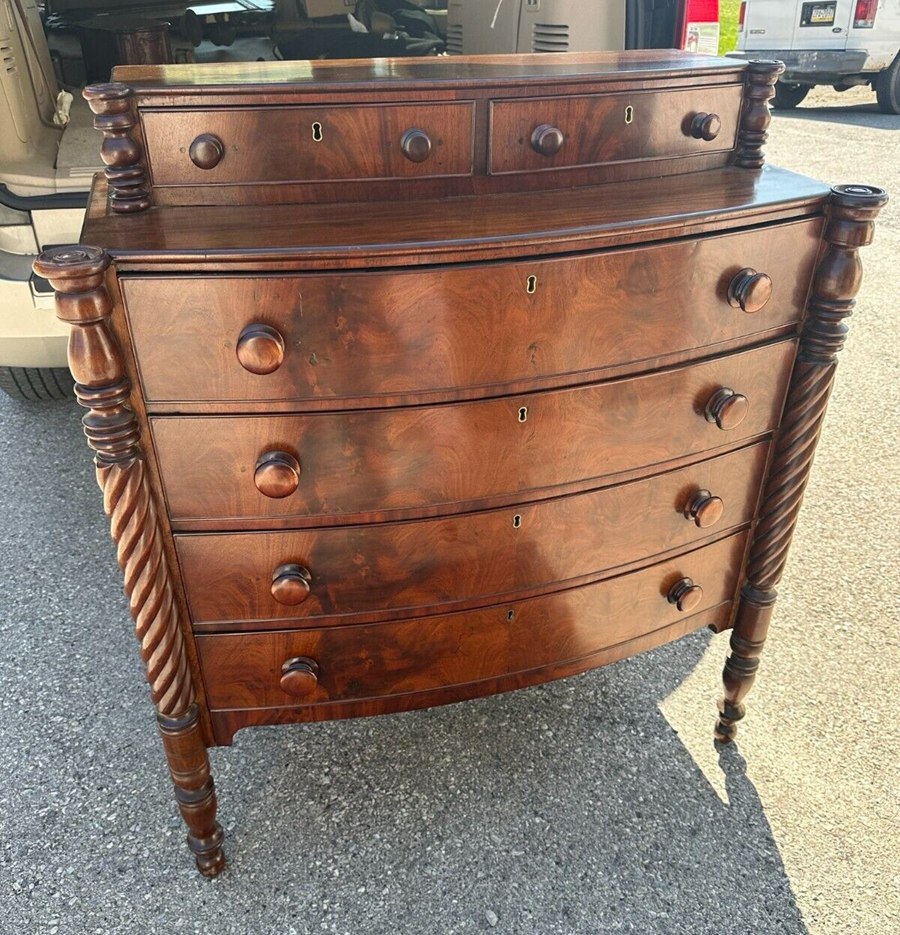
Sheraton dressers display hints of elegance and restraint. They are known for their straight lines, tapered legs, and nature-themed motifs. Often made from mahogany or satinwood, Sheraton dressers may also have intricate metal inlays and sophisticated hardware. These dressers bring an understated, refined presence to any bedroom.
French Provincial
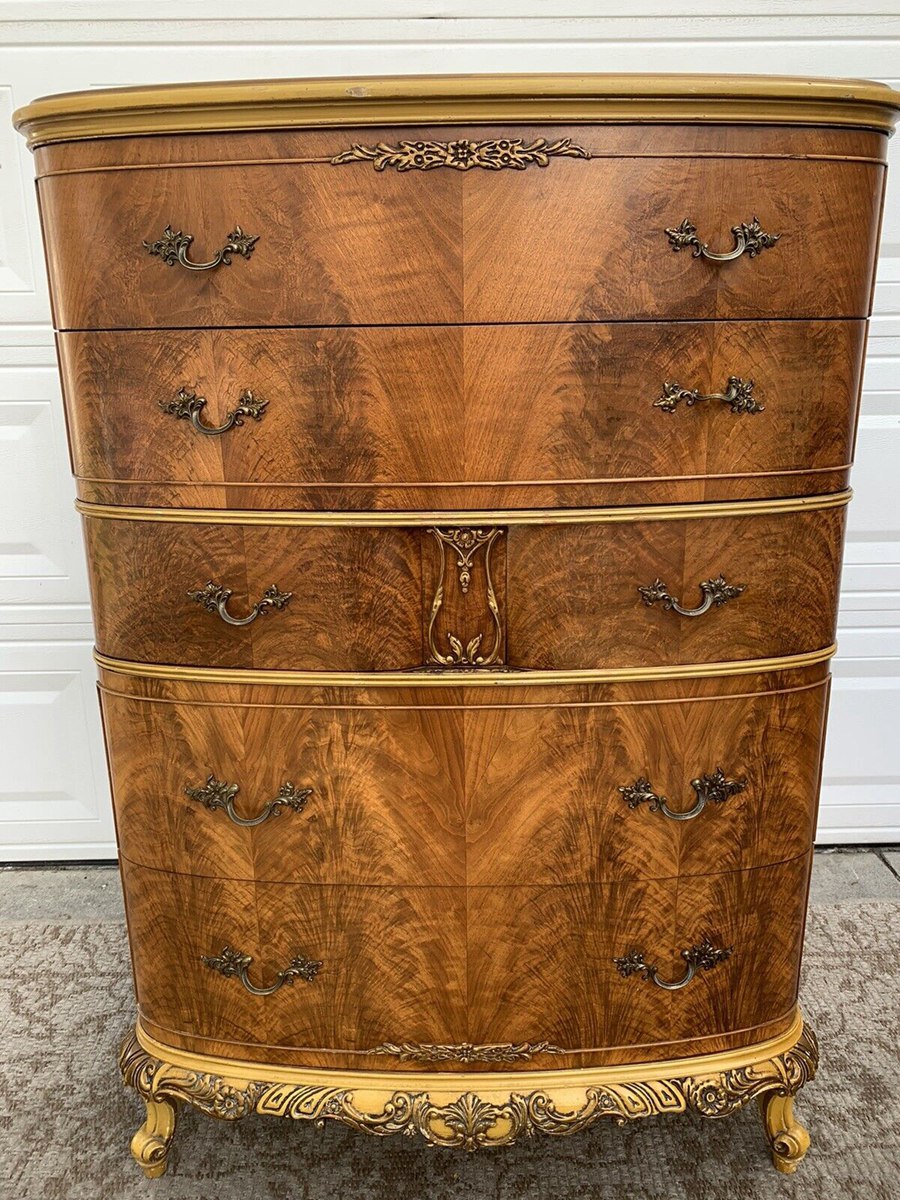
French Provincial dressers offer a charming blend of rustic and refined styles. They typically feature simple, elegant lines, and are made from local materials, such as oak or walnut. Ornamentation is minimal, with subtle carvings and distressed finishes, making French Provincial dressers well-suited for those who appreciate an understated beauty.
Empire
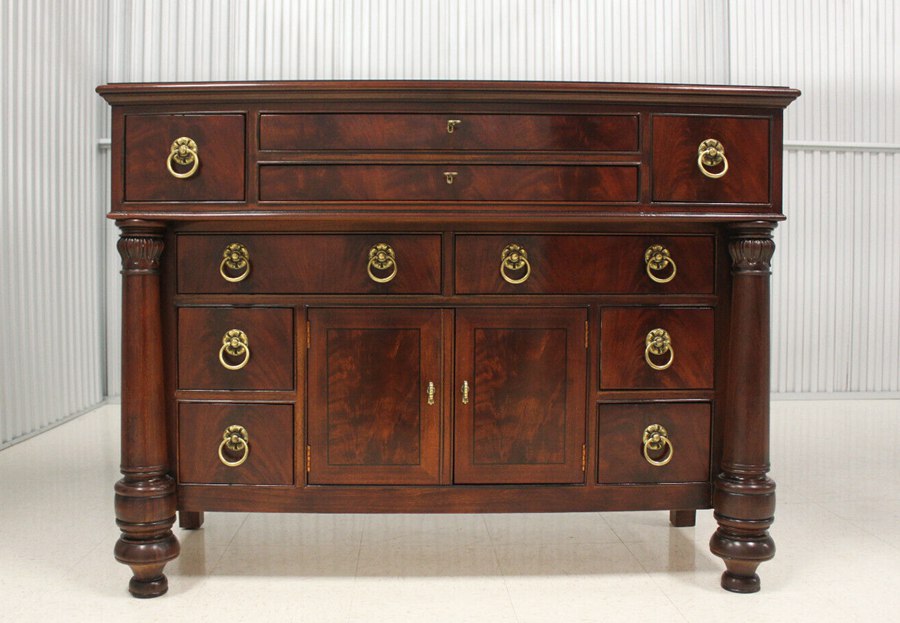
Empire dressers embody the grandeur and stature of the Napoleonic era. They often feature sweeping lines, classical motifs, and gilded hardware. Dark, rich woods like mahogany, rosewood, and walnut are common in the construction of these imposing dressers. Bring an air of historic elegance to your bedroom with an Empire-style dresser.
Assessing Antique Dresser Value
Material and Craftsmanship
When evaluating the value of an antique dresser, consider the materials used and the level of craftsmanship. Most antique furniture, including dressers, is made from high-quality woods like maple, oak, satinwood, or birch. Pay attention to details like the veneers and finishes, as well as the construction methods, such as hand-cut dovetails, carved panels, and symmetrical designs:
- Maple and Satinwood: Antique dressers made from maple or satinwood are often more precious due to the rarity and the appeal of their grains.
- Oak: Oak dressers are timeless and sturdy, contributing to their overall value.
- Veneers: The use of veneers in your dresser can indicate a level of craftsmanship that raises the value.
- Hand-cut dovetails: A handmade dresser with meticulously crafted dovetails can hold a higher value compared to mass-produced ones.
Condition and Restoration
An antique dresser’s condition plays a significant role in its value. While some wear and tear are expected, excessive damage, scratches, or cracks can lower its worth. Check for any restoration work that may have been done to the piece, as certain types of refinishing or alterations may affect the value:
- Original Finish: A dresser that retains its original finish is more valuable than one that has been refinished.
- Quality of Restoration: If a dresser has been professionally restored, the work’s quality may help retain or even increase its value.
- Alterations: Any alterations made to your dresser, such as hardware replacements or removals of original components, can lower its value.
Provenance and Documentation
Lastly, consider the provenance of your antique dresser. Provenance refers to the dresser’s documented history or a recognizable maker’s mark. If you can trace the piece back to a particular period, craftsman, or manufacturer, this can significantly enhance its value. While not every antique dresser will come with documentation, those that do have proof of provenance can command higher prices, so be sure to research your dresser’s history:
- Maker’s Mark: Look for stamps, labels or engravings that indicate who made the dresser; well-known makers or manufacturers will add to the value.
- Documentation: Original receipts, ownership records, or appraisals can help to authenticate your antique dresser and support its value.
Taking the time to evaluate your antique dresser in various aspects, like its material, craftsmanship, condition, restoration, and provenance, will help you understand its true worth.
Dating and Authenticating Antique Dressers
Distinguishing Features
As you explore the world of antique dressers, familiarize yourself with notable distinguishing features of each style, as understanding these will go a long way in helping you identify and authenticate antique pieces. For instance, Queen Anne style dressers showcase graceful curves, while Sheraton dressers are identifiable by their neoclassical designs.
- Queen Anne Style: Look for dressers with cabriole legs and delicate feet, commonly featuring walnut, mahogany, or maple wood.
- Sheraton Style: These dressers often have straight lines and light, tapered legs, typically crafted from mahogany or satinwood.
- Victorian Style: This style encompasses intricate carvings, curves, and heavy ornamentation, usually made of ash or rosewood.
- Edwardian Style: Dressers of this era are characterized by elegant curves mixed with geometric lines, often featuring inlaid wood designs.
- French Provincial: Look for simple lines, carved details, and an overall rustic appearance, commonly crafted with fruitwood or oak.
Signs of Age
When trying to authenticate an antique dresser, pay close attention to the details that can help you determine its age. These may include:
- Joinery: Hand-cut joints, such as dovetails, indicate an older piece, while machine-cut joints suggest a more recent origin.
- Hardware: Examine the dresser’s handles and locks, as they often change with time and can give you clues about the dresser’s age. A Sheraton dresser, for example, is likely to have brass pulls and oval backplates.
- Wood: The wood used in the dresser’s construction can also hint at its age. For instance, rosewood was popular during the Victorian era, while ash and other light woods were favored during the Edwardian period.
- Patina: Check for the natural aging of the wood’s finish, known as patina, which often has a warm, mellow appearance.
Expert Appraisal
If you are unsure about identifying and dating a particular dresser or wish to confirm your findings, consider consulting an expert appraiser. They can provide valuable insights into the dresser’s age, style, origin, and current market value. Be prepared to provide photographs and dimensions of the dresser, and any known history or documentation that might aid the appraiser in creating an accurate evaluation.
Where to Buy and How to Avoid Scams
Online Marketplaces
When looking for antique dressers, online marketplaces such as Etsy and eBay can be a great place to start. With their extensive inventories, you’re likely to find various styles like Queen Anne, Victorian, and Edwardian. Be sure to check seller ratings and reviews, as well as communicate with the sellers to ask questions about the dresser’s authenticity and condition. When dealing with high-value items, opt for insured shipping and request documentation if available.
Brick and Mortar Stores
Visiting antique shops is another reliable source for finding antique dressers. These shops often have knowledgeable staff who can help you identify styles and verify the authenticity of the piece. Additionally, you can physically examine the dresser for any signs of damage or wear, making it easier to make an informed decision. Remember to ask about the store’s return policy in case the item doesn’t meet your expectations.
Garage Sales
Garage sales can be an unexpected treasure trove for finding antique dressers at lower prices. However, the expertise of the seller may vary, making it essential for you to have some knowledge of the styles and features to discern between genuine antiques and reproductions. If you’re unsure, consider bringing along a knowledgeable friend or using a smartphone to research the dresser’s style, signatures, or markings.
Buyer Protection Tips
To avoid scams when purchasing antique dressers, keep these tips in mind:
- Research the different styles (Queen Anne, Victorian, Edwardian, etc.) and their key characteristics to help identify genuineness.
- Look for identifying markers such as maker’s marks, labels, logos, or stamps to ensure authenticity.
- Check the craftsmanship, material, and construction for signs of quality.
- Document the purchase, including detailed images and descriptions, for potential future validation or appraisal.
- Trust your instincts: If a deal seems too good to be true or a seller appears untrustworthy, it’s best to walk away.
Final Thoughts
In your journey to identify antique dresser styles, it’s important to pay attention to the details. Focus on features such as drawer configurations, borders, feet, construction materials, and joinery.
Some key styles to familiarize yourself with include:
- Queen Anne Dressing Table
- Rococo Antique Dresser
- Victorian Dressing Table
- Annaelle/Antique French Dressing Table
- Edwardian Style Dresser
- French Wood Provincial Chest/Dresser
As you examine each piece, consider the shape, style, size, and any unique characteristics that align with these different styles. Keep in mind that antique dressers can be composed of various woods, such as pine, maple, cherry, or poplar.
Remember to observe the furniture’s overall appearance, including leg styles, distinctive lines, and curves that may hint towards a specific period or design. And, be mindful of aspects like inlaid bands, moldings, and turnings, as these can provide clues to the dresser’s origin and era.
By understanding these stylistic cues, you’re well on your way to becoming proficient in identifying antique dresser styles. Keep practicing and refining your expertise, and soon you’ll be able to effortlessly distinguish between a Rococo dresser and a Queen Anne dressing table.

